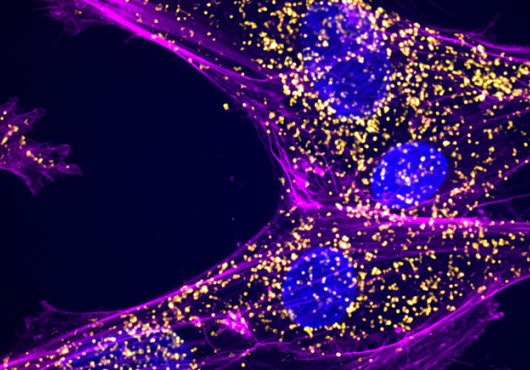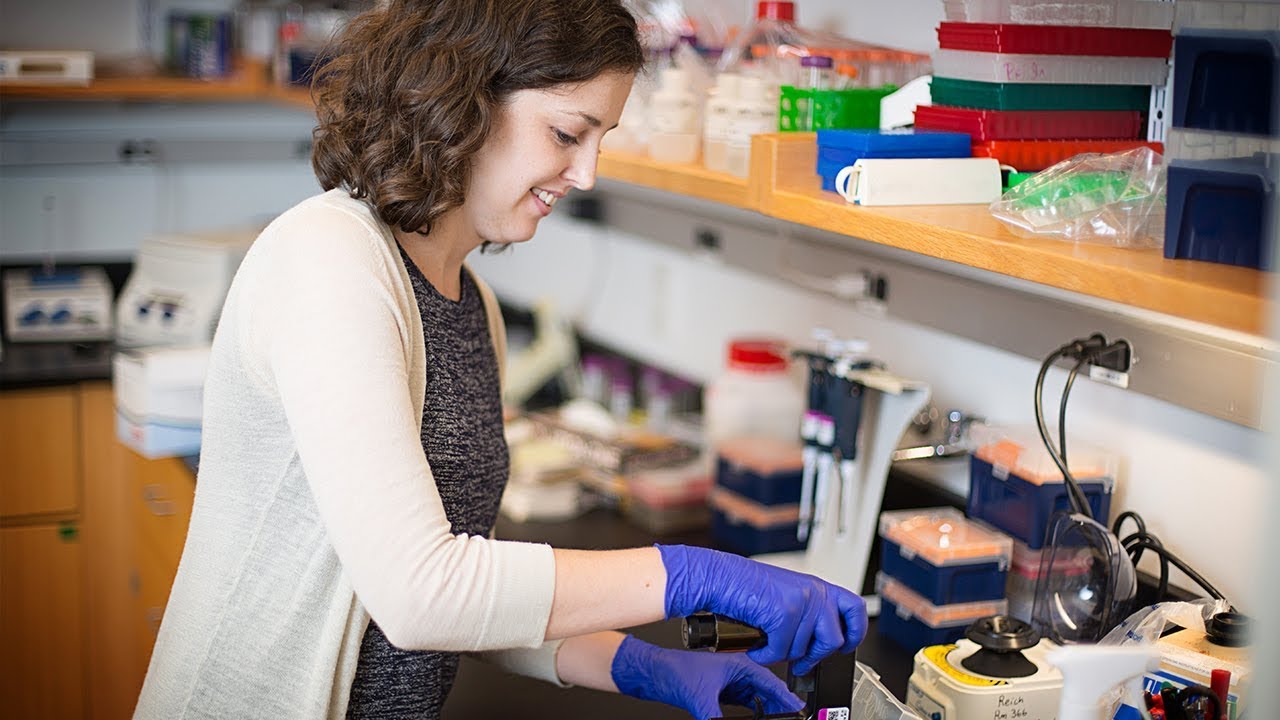
When Molly Schumer arrived as a freshman at Reed College in Portland, Oregon, she thought she might major in English or history. Then she took a biology course that changed everything.
“There’s a canyon that runs through the center of campus with a river at the bottom,” she recalls. Her class regularly trekked down to the water, where they trapped, tagged and released stickleback fish to estimate their population size.
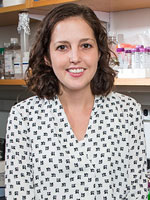
Despite the occasional prick from spines on the fish’s backs, Schumer loved the hands-on experience, so different from the textbook-based science she’d encountered in high school. She dove into research, eventually earning a PhD in evolutionary biology from Princeton University.
Today, Schumer is an award-winning postdoctoral fellow in the laboratory of David Reich at Harvard Medical School. She still plucks fish from rivers, only now she studies swordtails from the cloud forests of Hidalgo, Mexico, and lab-standard zebrafish, to better understand how hybridization—the intermixing of species—contributes to animal evolution.
“It’s been really clear that hybridization happens in plants, but there was this belief for a long time that animals were different,” said Schumer. “That belief is rapidly changing.”
Thanks to discoveries by researchers, including Schumer, biologists are coming to appreciate how often hybridization occurs in animals and that it doesn’t always lead to an evolutionary dead end.
Even many human populations descend from hybrids. Genetic analyses led by the Reich lab have revealed that the ancestors of modern Europeans and Asians interbred with Neanderthals and other archaic hominin species tens of thousands of years ago.
“Now that we know it happens so commonly, we need to know how,” says Reich.
Schumer is determined to find out.
Infinite diversity in infinite combinations
“The fish that I study are really cool,” says Schumer, because they’ve formed different hybrid populations in different rivers. “That gives us a lot of power to ask about the dynamics of hybridization in a way that’s sometimes hard with other animals.”
Swordtail hybrids have different colors, spot patterns, dorsal fin shapes, and lengths of a tail fin extension that gives the fish their name. Invisible traits vary too, such as tolerance for hot or cold waters.
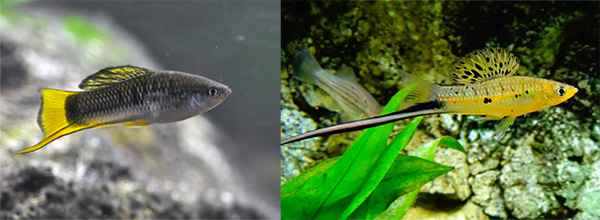
These diverse populations are helping Schumer explore many questions: How do species remain genetically and behaviorally distinct? What traits are under greatest selection pressure in hybrids? When species interbreed, which gene sequences get thrown out and which stick? Are certain regions of the genome especially tolerant of hybrid DNA? Why do some gene variants persist in populations despite being seemingly harmful?
Some of these answers may prove unique to swordtails, while others could point to broader principles.
“When you see hybridization dynamics that repeat among many different biological systems, you can start to see the underpinnings, the mechanisms, of how the genome evolves in general, and that’s really exciting,” says Schumer.
Spotting insight
Already, Schumer has made some surprising discoveries.
Not only have her studies added to recent evidence that animal hybridization is much more common than scientists thought—they have also shown that hybridization can once in a while create thriving populations.
Genetic incompatibilities between animals of different species often means hybrids have lower evolutionary fitness. Mules, for example, the offspring of male donkeys and female horses, may be hardy pack animals, but they’re also sterile. Schumer’s research suggests that hybrid populations are sometimes able to purge such genetic conflicts and that these populations may have a higher chance of surviving long-term.
In addition, Schumer is shedding light on why certain gene variants persist in populations despite being seemingly harmful.
“It isn’t surprising when hybrids have maladaptive traits, but it can be surprising when nonhybrid populations do,” she says.
Her findings could provide greater insight into human health as well as evolutionary biology in general.
“Some variants that cause human disease can be understood through an evolutionary lens,” she says. “They convey some other benefit.” A striking example in people is how the gene variant that causes sickle cell anemia also protects against malaria.
Some swordtails have spots on their tails that can turn into melanoma. Why hasn’t the spotting pattern been naturally purged from the population? Schumer suspects a similar principle is at play.
One hypothesis is that female swordtails prefer to mate with males that sport spots. In that case, the evolutionary advantage of having more offspring might outweigh the disadvantage of developing melanoma.
“You can have this tug-of-war between different evolutionary forces that maintains a trait even though it reduces survival,” says Schumer.
Contradictions like that are what attracted Schumer to swordtails in the first place. She’s fascinated by the fact that the fish’s trademark long tail fins can hamper their swimming performance and make it easier for predators to see them, yet their attractiveness to females keeps the trait going strong generation after generation.
“A cool connection is that these sexually selected traits can actually promote hybridization, especially if a species hasn’t seen the trait before,” says Schumer.
National recognition
HMS isn’t the only institution that has taken notice of Schumer’s work.
Last fall, the Howard Hughes Medical Institute named Schumer and two other HMS postdocs among its inaugural class of 15 Hanna Gray Fellows. The fellowships, which carry monetary awards of up to $1.4 million over eight years, support talented early-career researchers from groups underrepresented in the life sciences as they pursue tenure-track faculty positions.
Schumer also received one of five L’Oréal USA 2017 For Women in Science fellowships, which provide $60,000 each to help female postdocs advance their research.
She was also awarded the 2017 Theodosius Dobzhansky Prize from the Society for the Study of Evolution, given in recognition of “the accomplishments and future promise of an outstanding young evolutionary biologist.”
In addition to supporting her research, the awards should help ease the way as Schumer prepares to take on her own lab at Stanford University in 2019.
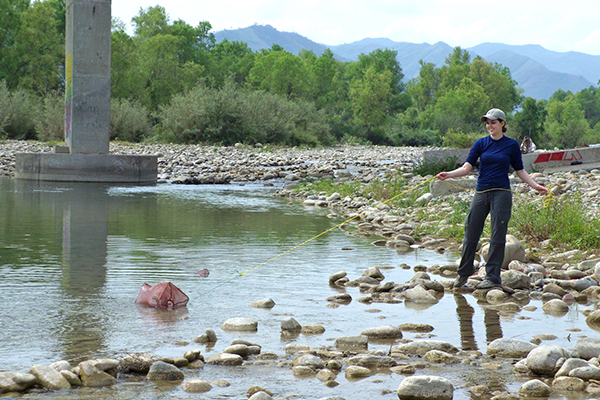
Jack of all trades
Schumer attributes part of her success to the broad skill set she’s developed.
“I’ve had to integrate everything from hiking to the sites and collecting fish to preparing the samples in the lab to analyzing the DNA,” she says. “A lot of labs—for good reason—are becoming more modular, but with this work I’ve become really interdisciplinary, and I think being able to do all of the steps has helped me get a broad view of what’s going on.”
The skill she uses most but didn’t expect to need as a biologist: computer programming.
“Almost all of my analyses involve programming, from getting data from the gene sequencer to trying to interpret what the signals in the data mean,” she says.
Schumer had to teach herself programming in graduate school. Given the rising computational demands of life sciences research, she believes more biology programs should incorporate formal training in computer science. To that end, she’s working with a Teach for America colleague in the Boston area to develop laboratory exercises for high-school students in AP biology to help build those skills.
Schumer has long nurtured a passion for science education. She participated in Teach for America between college and graduate school, teaching science for two years in rural Mississippi.
She wants her lessons to provide the type of hands-on experience that hooked her into biology at Reed and to convey what she loves about her work.
“You get to try to understand what makes organisms tick and how the genome works,” she says. “Plus, it’s full of surprises. You can have a clear idea of what you think is going on in a system and then get completely derailed by a piece of data.”
Those twists and turns should keep Schumer busy for a while.
“Reconciling the mounting evidence for hybridization with our foundational concepts of evolutionary biology will be the work of the next several decades,” she says.
Or as Reich puts it, “She’ll retire one day and probably still study fish.”
